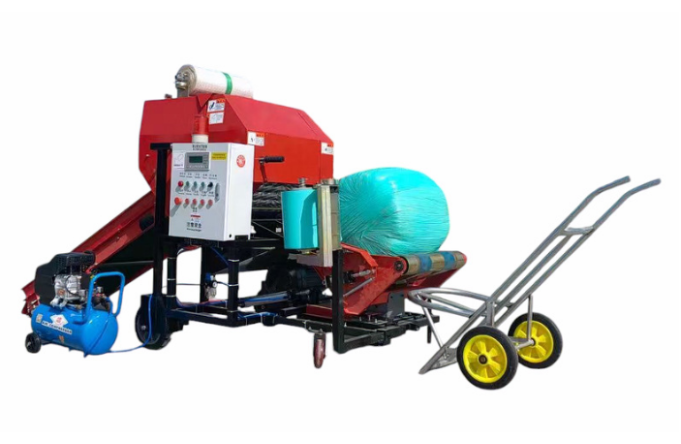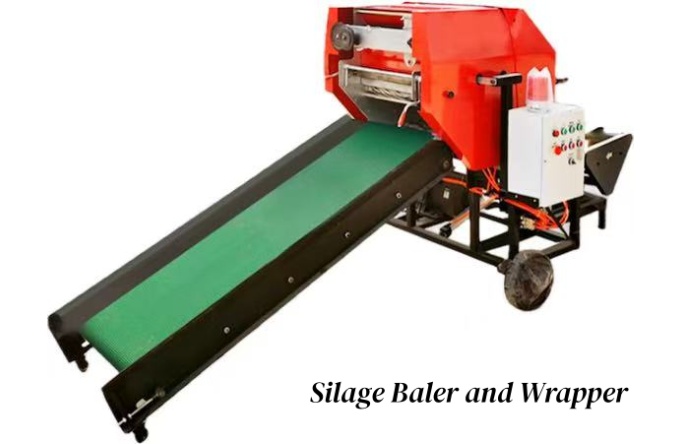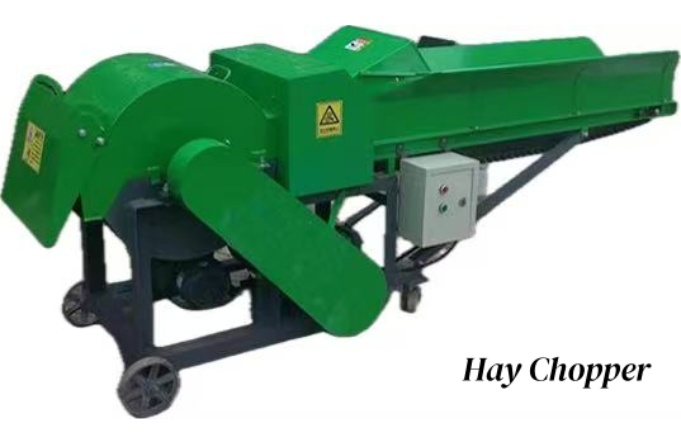


1. Silage Baling
It can automatically bundle shredded corn stalks, alfalfa, peanut stalks, and other green forage or crop straw into compact cylindrical bales. This effectively reduces the volume of silage during storage, making it easier to transport and store.
The highly automated baling process reduces manual labor, improves production efficiency, and ensures the consistency and quality of the bales.
2. Filming and Sealing
After baling, the machine automatically wraps the bales. The plastic film used for wrapping is typically a stretch film specifically designed for silage, offering excellent sealing properties.
The sealed plastic film creates an anaerobic environment, inhibiting the growth and reproduction of harmful microorganisms while promoting the fermentation of lactic acid bacteria. This ensures that the silage’s nutrients are retained during storage, allowing it to be preserved for a long time, maintaining its freshness, juiciness, and palatability, thereby enhancing its nutritional value.
1. Improved Production Efficiency
Combining baling and film wrapping functions in one machine significantly saves time and labor compared to traditional separate baling and film wrapping methods. Processing from raw materials to finished bales is completed in a single process, reducing material handling and waiting time in intermediate stages, making it suitable for large-scale silage production.
2. Guaranteed Product Quality
Automated operation allows for precise control of bale density and film sealing. The appropriate bale density ensures that the bales do not loosen during storage, while a good film seal ensures a stable silage fermentation environment, resulting in high-quality silage and reducing the risk of mold and spoilage.
3. Easy Operation
Equipped with an advanced control system and intuitive user interface, even ordinary workers can quickly master the operation after simple training. This reduces production errors and inefficiencies caused by complex operations.
4. Wide Range of Applications
It can process a variety of silage materials, including corn stalks, sorghum stalks, alfalfa, ryegrass, and other crop straw and forage grasses, meeting the needs of farmers in different regions and at different scales.
| No. | Item | Electric Model | Diesel Model |
| 1 | Dimensions (L×W×H) | 3600×1650×1850 mm | 2552×1800×1500 mm |
| 2 | Matching Power | "5.5 kW (main motor) + 0.55 kW (wrapping motor)" | "18 hp (diesel engine) + 3 kW (generator)" |
| 3 | Rated Voltage | 380 V | |
| 4 | Rated Speed | 960 r/min | |
| 5 | Bale Size | 550×520 mm | |
| 6 | Bale Weight (Silage) | 70–90 kg (silage moisture 50–70%) | |
| 7 | Bale Weight (Distiller’s Grains) | 90–100 kg (distiller’s grains moisture 50–70%) | |
| 8 | Working Efficiency | 50–70 bales/h | |
| 9 | Roller Quantity | 30 rollers | |
| 10 | Coupling Method | Fixed type | |
| 11 | Wrapping Layers | 2–3 layers (adjustable) | |
| 12 | Total Weight | 650 kg | 600 kg |
| 13 | Twine Method | Net twine | |
If you have any questions, feedback or comments, please fill out the form below and we will reply you back as soon as possible.